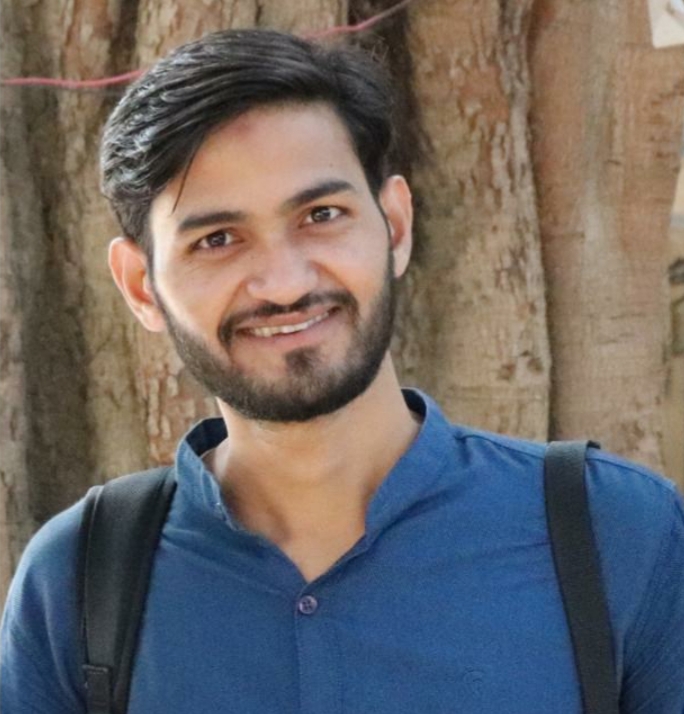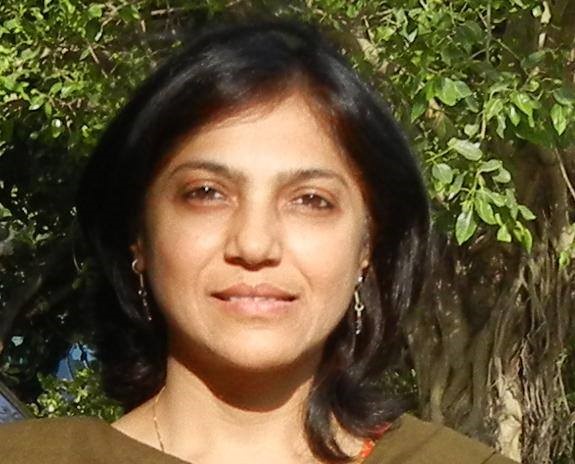Yogesh Maitreya
 I did not read Arundhati Roy’s introduction to Navayana’s edition of Annihilation of Caste and I am sure I do not need to read it. However, I have read and re-read Annihilation of Caste. The text of AoC itself introduces the exploitative nature and nuances of Brahminic caste and of Brahmins in a straightforward language.Therefore, I believe, it does not need any Brahmin to introduce it.
I did not read Arundhati Roy’s introduction to Navayana’s edition of Annihilation of Caste and I am sure I do not need to read it. However, I have read and re-read Annihilation of Caste. The text of AoC itself introduces the exploitative nature and nuances of Brahminic caste and of Brahmins in a straightforward language.Therefore, I believe, it does not need any Brahmin to introduce it.
The introduction to Dr. Ambedkar was a childhood event for me (and many others like me, I am sure). An event in which I first discovered him as a larger-than-life figure. My grandmother used to take me to a Buddha Vihara, located at a stone’s throw from our house in a Dalit settlement. In the Buddha Viharas’s interior, dimly lit with a few candles and filled with the soft fragrance of incense sticks, I used to monotonously recite Buddhist prayers. All the while, my eyes used to keep stealing glances at the tranquil face of the Buddha and at the man next to him, wearing a well crafted western suit, with black-bodied glasses. Listed underneath his photo, were the academic degrees he had earned. Something I was often told by people there: Babasaheb khoob shikale hote, itkya digraya ghetalya tyanni (Babasaheb had studied so much, he had so many degrees).. The name under the photo: Dr. Bhimrao Ramji Ambedkar. All these were the first few naïve glimpses I drew of Dr. Ambedkar and his scholarship. I was about seven years old then.
But since no one in my family had developed the pursuit of reading, we had no literature of his through which I could discover his intellect. All we had was Dr. Ambedkar’s lively photo. However, my parents and grandparents had an instinct about education. Despite tussling with economic penury for long periods of our lives, they always appreciated the quest for knowledge in my generation. So whenever it came to education and studies, I was told: Babasaheba sarakhe shika, study like Babasaheb Ambedkar. Also my grandmother used to narrate stories about Dr. Ambedkar and his life which she had heard from other sources. In her stories Dr. Ambedkar used to appear as an angel on the one hand, a saviour of Dalits, and on the other, a man who despite going through extreme pains and humiliations in the Brahmanical and casteist society, studied extensively and liberated his people. These stories were so powerful as to give me goose bumps. So after all these years, Dr. Ambedkar has become synonymous not only with academic scholarship but with a deep moral character.
This childhood introduction to Dr. Ambedkar was an innocent one and it has carved an almost impeccable space in my mind about ‘who is Dr. Ambedkar’. The Ambedkar of childhood became much more extensive and profound during my growing up years. During my graduation days, in my frequent readings of him, and now as I pursue my Masters’ degree, Dr. Ambedkar has become an everyday reality with his critique of Indian-oppression of caste and his scholarly writings that deductively aim at liberation of all oppressed people. But more importantly Dr. Ambedkar, unlike other scholars I have studied so far, is an incessant source of inspiration for me.
So in brief, this is how I had been introduced to Dr. Ambedkar long before any misguiding introduction written by Arundhati Roy. Clearly, Dr. Ambedkar needs no introduction, not even for Brahmins, if they keep their eyes and ears open to face the truth spoken by Dalits. If Columbia University can pay heed to Dr. Ambedkar’s seminal text ‘Annihilation of Caste’, then how come the Indian educated elite needs an introduction to Ambedkar’s literature, that too in 2014, as claimed by the Arundhati Roy and her publisher S. Anand of Navayana? How can the Brahmanical imagination of Dalit life afford not to see the importance of Ambedkar all this while and feels now the need for a Brahmin to introduce AoC?
An attempt to maintain intellectual hegemony
I have been following the debates around the appropriation of Dr. Ambedkar’s seminal text, Annihilation of Caste, for months now. I draw here a few view points to look through the entire episode of this ‘introduction’ gambit. This exercise is clearly an attempt to gain philosophical royalty by usurping the ‘epistemology of subaltern castes’ and sidelining subalterns from the platform of caste debates. And all this without Roy uttering a single word on the discourse of the Dalit movement and struggle and suddenly incarnating herself with messiah-hood in the discourse of annihilation of caste. Such people never pose any substantial arguments against hegemony of their own Brahminical lineage that is majorly responsible for the creation and sustenance of the caste disease.
Moreover, the new annotated version of ‘Annihilation of Caste’ (AoC) with an introduction by Arundhati Roy and published by Navayana creates the newest version of ecclesiastical authorship (Vedic in the Indian context). It comes in the tradition of inculcating the Vedic essence of hegemonic authorship over all societal subjects. Thus undermining Dalit literary imagination by selling Brahminic literary debates on Dalit issues and creating a space for the Brahmins and savarnas in which the glory of being an intellectual on Dalit subjects can be enjoyed at various international platforms.
But that is not all. The efforts invested by the Arundhati-Anand project in the appropriation of AoC are constituted by much subtle nuances. These are psychological too when one looks at them in reference to the enclosed consciousness of Brahminic literary imagination of Dalit life/subjects.
Over the past six decades, Dr. Ambedkar has not only become an inspiration for the mass population of Dalits in their academic pursuits but also stands as a symbol of assertion to live with dignity and strive for humane conditions in this casteist society. Then how is it possible that Ambedkar has remained un-introduced to the so called ‘educated’ people? If Ambedkar’s literature needs an introduction in India and especially to the community of the so-called educated elite (as the Arundhati-Anand project claims) even 58 years after his demise, then this raises a serious question. And this doubt can be cleared and elaborated through the lens of ‘Brahminic literary imagination of Dalits’, its cultural hegemony, and power lust of Brahmanism.
According to the Vedas, Brahmins are the only authority to pursue intellectual quests in the social domain. This automatically plants the notion of being ‘born intellectual’ in them which is further nurtured by their caste position. Consequently this becomes their subconscious anchor for all social arguments. But in post-independence India, Vedic authority was replaced by the Constitution, thereby providing every citizen the right to pursue intellectual activity regardless of their caste positioning.
This hit the Brahminical hegemony as a disastrous cyclone which uprooted their empire of intellectual temples. The Brahmin’s ego was shattered. The desire to maintain their old (Vedic) hegemony, without murdering their Brahmin-ness, has thus become almost an essential activity for them. This desire to continue intellectual hegemony makes them deploy new means all the time. This is rooted in their sense of ‘inner guilt’ from the subconscious knowledge of their ancestors having brought destruction to this society. Now, they insert themselves in the democratic affairs of the country under pretences to maintain the label of intellectual caste. Here the ego of Brahmin literary imagination deploys all possible ways to be the saviour of Dalits without acknowledging their own Brahminic-illiteracy of the empiricism of Dalit life.

I earlier indicated that the motives behind the introduction by Arundhati Roy are far more subtle than to just appropriate the text of AoC. I argue that, if proper efforts can be invested in investigating her objectives in writing an introduction of AoC, then the attempts to appropriate Dalit empiricism through literary imagination of Brahmins in India can be perceived as a pathological enterprise. The previous counter arguments in a number of articles by a variety of people from different caste locations published in Round Table India tried to define for us the ontology of appropriation of Dalit texts by Brahmins.
In constant contradiction: Brahminic and Dalit intellectual forces
One reason behind this is that both these forces, Brahminic and Dalit, are in constant contradiction with each other. The former is trying to almost establish the universal law of their scholarship through its intellectual hegemony whereas the latter endeavours to overthrow Brahminic hegemony to attain the vision of hegemony-less domains, asserting itself as an agency that carries the potential to create new philosophical knowledge in Indian discourse, which so far was undermined by cultural violence done against Dalits.
The oppressive nuances of the Brahminic Caste in Indian discourses have always been disguised with a well maintained silence that is manufactured by casteist sources- especially the media and literary sources. Dr. Ambedkar was perhaps the first scholar who not only brought caste explicitly as political, social and economic oppression into Indian academia, but also maintained consistency on the subject of caste till the end of his meticulous scholarly discourse on the anthropology of caste, where he identified the Brahmin caste as the oppressor and identified its exploitative social position. Without substantially criticising her own hegemonic caste position, Arundhati Roy overlooks the need for internal critique of her own caste privilege and goes on to completely misunderstand and misinterpret the text of ‘Annihilation of Caste’.
Another nuance of this act of appropriation by Arundhati Roy points us to the larger domain of cultural violence against Dalits by the Brahmin literary imagination. Most of their literary efforts end up undermining Dalits, in their own empirical knowledge of caste oppression, by establishing the textual context of their lives through Brahminic interpretations that subconsciously and often openly contradict the objectives of AoC. Simply because, Brahmins never give up their caste positioning even when realising it as a space that channelizes exploitation.
As Brahmins and Savarnas in India control all the resources and spaces of discourses and opinions such as media and publishing houses they influence the opinion of large masses on most subjects through a brahminical dimension. In Arundhati Roy’s case the subject is Caste. It is impossible that the aforementioned fact was unknown to Arundhati Roy, but her actions indicate only her deliberate attempts to offer the misleading interpretation of Ambedkar and AoC to the upper castes as well as future scholars of Caste. This deliberate attempt can only be defined as the attack of her Brahminic consciousness on the spaces of Dalits in their own discourses and interpretations of their lives, while taking sadistic pleasure out of calling their spaces as ‘Insult Machines’.
~
Please also read other articles on the same issue:
Navayana attempts to erase Ambedkar from AoC
~
Masked Messiahs: The Politics of Comparison: by Joby Mathew
~
Mary Kom: Nation in Priyanka Chopra: by Thongam Bipin
~
The Brahmean Machine: Distorting Revolt into Surrender: by Shakyamuni Chandal
~
Arundhati Roy’s introduction to AoC is a tactical, brahminical trick
~
On how Arundhati Roy introduces AoC without losing her upper hand: by Murali Shanmugavelan
~
Introducing Arundhati Roy and Friends: by Karthik Navayan
~
A tale of two prefaces: by Karthick RM
~
Between Savior and Seller: Critiquing Preface Politics: by Praveena Thaali
~
A Glass Menagerie for the Bahujans—Annihilation of Caste and Gandhi’s Wards: by James Michael and Akshay Pathak
~
Stigmatizing Dalits, From the Wadas to the Web: by Nilesh Kumar
~
Without Arundhati Roy and Gandhi, the book had its own value: Bojja Tharakam
~
Caste in the Name of Christ: An angry note on the Syrian Christian Caste: by Nidhin Shobhana
~
The Not-So-Intimate Enemy: The Loss and Erasure of the Self Under Casteism: by Gee Imaan Semmalar
~
Flaunting noble intentions, nurturing caste privileges: by Asha Kowtal
~
The Question of Free Speech: by Vaibhav Wasnik
~
Arundhati Roy replies to Dalit Camera
~
An open letter to Arundhati Roy: by Dalit Camera
~
Vedic Chants for the 21st Century
~
Arundhati Roy’s “Introduction’ to Ambedkar: Inside one Misogynistic & Xenophobic Dalit’s mind: by Anoop Kumar
~
The Judge, the Jury and the Goddess: by Akshay Pathak
~
Resisting a Messiah: by Anoop Kumar
~
An Introduction to Anoop Kumar’s “Misogynistic and Xenophobic Rants”: by Vinay Bhat
~~~
Yogesh says:
My name is Yogesh Maitreya. I am from Nagpur. I am doing my M.A in Criminology and Justice (2013-15) from TISS (Tata Institute of Social Sciences, Mumbai).
Cartoon by Unnamati Syama Sundar.










